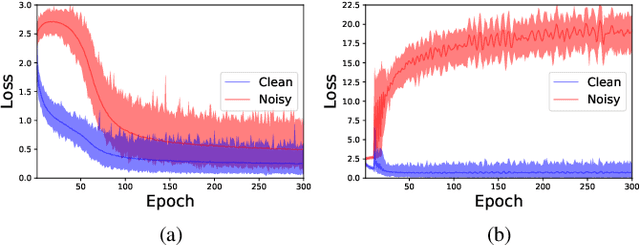Ziyin Li
BEVFusion4D: Learning LiDAR-Camera Fusion Under Bird's-Eye-View via Cross-Modality Guidance and Temporal Aggregation
Mar 30, 2023Abstract:Integrating LiDAR and Camera information into Bird's-Eye-View (BEV) has become an essential topic for 3D object detection in autonomous driving. Existing methods mostly adopt an independent dual-branch framework to generate LiDAR and camera BEV, then perform an adaptive modality fusion. Since point clouds provide more accurate localization and geometry information, they could serve as a reliable spatial prior to acquiring relevant semantic information from the images. Therefore, we design a LiDAR-Guided View Transformer (LGVT) to effectively obtain the camera representation in BEV space and thus benefit the whole dual-branch fusion system. LGVT takes camera BEV as the primitive semantic query, repeatedly leveraging the spatial cue of LiDAR BEV for extracting image features across multiple camera views. Moreover, we extend our framework into the temporal domain with our proposed Temporal Deformable Alignment (TDA) module, which aims to aggregate BEV features from multiple historical frames. Including these two modules, our framework dubbed BEVFusion4D achieves state-of-the-art results in 3D object detection, with 72.0% mAP and 73.5% NDS on the nuScenes validation set, and 73.3% mAP and 74.7% NDS on nuScenes test set, respectively.
Learning from Noisy Labels via Dynamic Loss Thresholding
Apr 01, 2021



Abstract:Numerous researches have proved that deep neural networks (DNNs) can fit everything in the end even given data with noisy labels, and result in poor generalization performance. However, recent studies suggest that DNNs tend to gradually memorize the data, moving from correct data to mislabeled data. Inspired by this finding, we propose a novel method named Dynamic Loss Thresholding (DLT). During the training process, DLT records the loss value of each sample and calculates dynamic loss thresholds. Specifically, DLT compares the loss value of each sample with the current loss threshold. Samples with smaller losses can be considered as clean samples with higher probability and vice versa. Then, DLT discards the potentially corrupted labels and further leverages supervised learning techniques. Experiments on CIFAR-10/100 and Clothing1M demonstrate substantial improvements over recent state-of-the-art methods. In addition, we investigate two real-world problems for the first time. Firstly, we propose a novel approach to estimate the noise rates of datasets based on the loss difference between the early and late training stages of DNNs. Secondly, we explore the effect of hard samples (which are difficult to be distinguished) on the process of learning from noisy labels.
 Add to Chrome
Add to Chrome Add to Firefox
Add to Firefox Add to Edge
Add to Edge